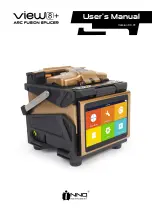
Convex Fillet Weld
ACTUAL THROAT
EFFECTIVE THROAT
CONVEXITY
LEG
LENGH
THEORETICAL THROAT
CONCAVITY
ACTUAL THROAT
AND EFFECTIVE
THROAT
LEG
SIZE
SIZE LEG
THEORETICAL THROAT
Concave Fillet Weld
ACTUAL THROAT
EFFECTIVE THROAT
CONVEXITY
LEG
LENGH
THEORETICAL THROAT
CONCAVITY
ACTUAL THROAT
AND EFFECTIVE
THROAT
LEG
SIZE
SIZE LEG
THEORETICAL THROAT
4.6 Fillet Welds
A fillet weld is approximately triangular in section, joining two surfaces
not in the same plane and forming a lap joint, tee joint or corner joint.
Joints made with fillet welds do not require extensive edge preparation,
as is the case with butt welded joints, since the weld does not
necessarily penetrate the full thickness of either member. It is important
that the parts to be joined be clean, close fitting, and that all the edges
on which welding is to be carried out are square. On sheared plate it
is advisable to entirely remove any ‘false cut’ on the edges prior to
welding. Fillet welds are used in the following types of joints:
‘T’ Joints
A fillet weld may be placed either on one or both
sides, depending on the requirements of the work.
The weld metal should fuse into or penetrate the
corner formed between the two members. Where
possible the joint should be placed in such a position
as to form a “Natural ‘V’ fillet” since this is the easiest
and fastest method of fillet welding.
Lap Joints
In this case, a fillet weld may be placed either on one
or both sides of the joint, depending on accessibility
and the requirements of the joint. However, lap
joints, where only one weld is accessible, should be
avoided where possible and must never constitute
the joints of tanks or other fabrications where
corrosion is likely to occur behind the lapped plates.
In applying fillet welds to lapped joints it is important
that the amount of overlap of the plates be not less
than five times the thickness of the thinner part.
Where it is required to preserve the outside face or
contour of a structure, one plate may be joggled.
Corner Joints
The members are fitted as shown, leaving a ‘V’-
shaped groove in which a fillet weld is deposited.
Fusion should be complete for the full thickness
of the metal. In practice it is generally necessary
to have a gap or a slight overlap on the corner.
The use of a 1.0–2.5 mm gap has the advantage of
assisting penetration at the root, although setting
up is a problem. The provision of an overlap largely
overcomes the problem of setting up, but prevents
complete penetration at the root and should therefore
be kept to a minimum, i.e. 1.0–2.5 mm.
The following terms and definitions are important in specifying and
describing fillet welds.
Leg Length
A fusion face of a fillet weld, as shown below. All specifications for fillet
weld sizes are based on leg length.
Throat Thickness
A measurement taken through the centre of a weld from the root to the
face, along the line that bisects the angle formed by the members to
be joined.
Effective throat thickness is a measurement on which the strength of a
weld is calculated. The effective throat thickness is based on a mitre fillet
(concave Fillet Weld), which has a throat thickness equal to 70% of the
leg length. For example, in the case of a 20 mm fillet, the effective throat
thickness will be 14 mm.
Convex Fillet Weld
A fillet weld in which the contour of the weld metal lies outside a
straight line joining the toes of the weld. A convex fillet weld of
30
BOC Smootharc 180 Multiprocess operating manual
Summary of Contents for 180 Multiprocess
Page 1: ...180 Multiprocess Operating manual 6PRRWKDUF GYDQF GYDQF ...
Page 45: ...45 BOC Smootharc 180 Multiprocess operating manual ...
Page 53: ......
Page 54: ......
Page 55: ......
















































